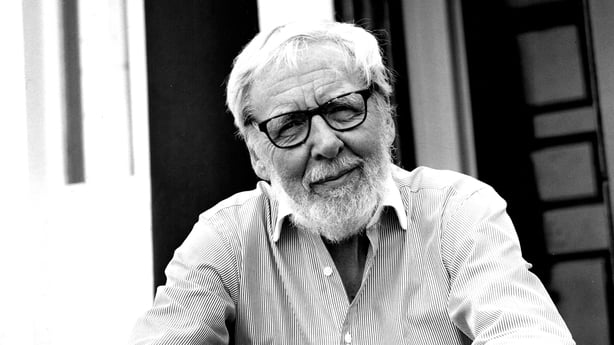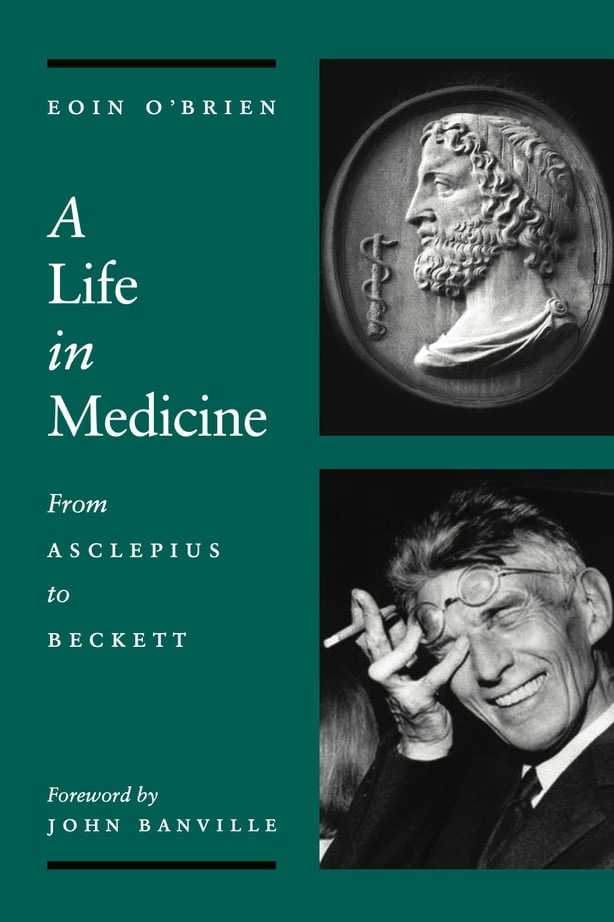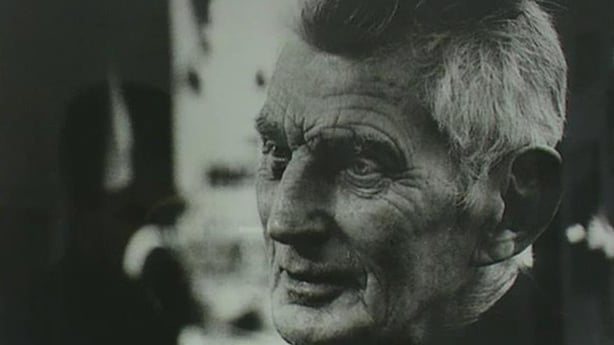In his new memoir, A Life in Medicine: From Asclepius to Beckett, Professor Eoin O'Brien, an Irish cardiologist and clinical scientist of international repute, offers a vivid portrait of life in medicine and literature. Below, we present novelist John Banville's introduction to O'Brien's memoir.
In this splendid memoir Eoin O’Brien recuperates a vanished world, if only in words. But what is 'only’ about words? They are where we live, and where the past endures. Memory is notoriously undependable in the matter of places and events, but what has been written, as the poet Horace assured us, will outlast the Pyramids.
When he came to contemplate and organize his own past, Professor O’Brien observes with some surprise how little of it he owns – ‘It was as if my history existed courtesy of others, and I was merely a spectator.’ One understands the sentiment, but begs to differ. The record here of a life and the times in which it was lived is a rich and varied tapestry, and the weaver of it was, and is, for all his doubts, a highly active participant.

His narrative opens with a delightful recollection of sitting as a little boy on the knee of his paternal grandfather – ‘old man with stick’, as he was known to his grandchildren – in a prelapsarian, sunlit garden on the North Circular Road. It is an image emblematic of the life the little boy would go on to live, which from his account of it has known more brightness than shadow. ‘If I were to define life as a gamble, it is fair to say I was dealt a pretty good hand.’
The opening chapters, dealing with his family origins and his childhood, provide a fascinating account of the aspirations and achievements of determined people in a poverty-stricken and often repressive nascent state – younger readers will hardly credit the struggles that were required by intelligent and public-spirited individuals to make a living, and a life, in the first half of the twentieth century, before and especially after the foundation of the Republic.
'I grew up,' Professor O’Brien tells us, ‘in proximity to nurses, doctors and patients.’ Both his parents were physicians. They were bright, diligent and hard- working, but both encountered disappointment and even betrayal in their careers. His father’s early contribution to the battle against tuberculosis, the scourge of the times, went largely unacknowledged, leaving him emotionally astray in his later years. All the same, Professor O’Brien tells us, ‘GT’, as his father was known, ‘dominates my reminiscences’.

charitable petition on O Connell Street, circa 1963
The professor's mother, Muriel, or 'Moo’, which was the family’s affectionate nickname for her, studied at the Royal College of Surgeons in Ireland, securing top marks in her examinations, and in 1934 was presented with a gold medal as leading House Physician at Mercer’s Hospital in Dublin. She gave up medicine after a young patient whom she was attending died accidentally, and legal action was taken, the result of which is unknown to the author. ‘She never spoke of this incident,’ he writes, ‘which I uncovered in her papers after her death.’ What family has not its secret sorrows?
Life in the city in the 1950s was at once pinched and colourful.
The young Eoin O’Brien had a knack for getting into trouble. And in those authoritarian times, trouble was easy to get into. One day for a prank he and a couple of friends went into an Anglican church on Clyde Road and paraded, chanting, down the aisle. They were surprised by the vicar, who marched them to their Catholic-run school and denounced them to the headmaster, who had no choice but to expel the trio. Why so severe a punishment? Because the Archbishop of Dublin, the poisonous and all-powerful John Charles McQuaid, had forbidden Catholics to enter a Protestant Church under pain of excommunication. Ah, yes, Dublin in the rare oul times...
Life in the city in the 1950s was at once pinched and colourful. Doctors, nurses and medical students were something of a special breed, acknowledged as dedicated professionals at work, but envied as unsubduably racy once outside the hospital, the surgery or the college.
Medicine at that time was still a ‘hands-on’ practice, actually as well as figuratively. Professor O’Brien shows us a closed world that is closer to the Holles Street Hospital episode in Ulysses than to the present- day, largely impersonal and mechanized business of treating the sick. These pages abound in medical ‘characters’, physicians who were as eccentric as they were caring.

But not as eccentric as the denizens of Baggotonia, that fabled area of the city that 'stretched from the Grand Canal towards the city along Baggot Street with its meagre flats and studios, past the parks of Fitzwilliam and Merrion to St Stephen's Green and onwards to Grafton Street.’ It was here that literary Dublin based itself. Eoin O’Brien specialized in cardiology, but his love was for writing and writers and painting and painters.
The Beckett we encounter here is a great artist, and a kindly, affable and mischievously humorous human being.
One of the odd things about Baggotonia – and there were many – is the fact that most of the writers who haunted it were not Dubliners, but 'up from the Country'. Brendan Behan was the chief exception. Others, such as Patrick Kavanagh, Flann O’Brien, Ben Kiely, John McGahern – who would have objected to being considered a Baggotonian, though he spent much time there – and many more, had shaken the rural dust from their heels and fled to the city. The result was that the indigenous Irish literature of the time – that is, produced by those who had not emigrated, or ‘gone into exile’, as they would have insisted, such as Joyce and Beckett – had a strong pastoral flavour, even when its setting was urban.

It is to Beckett that Professor O’Brien’s final chapter is devoted. They were friends from 1977, when the two first met, until 1989, the year of the writer’s death. These pages are suffused with a fondness and warmth that emanated from both sides of the friendship. Readers who make the mistake of seeing the whole man through the dark glass of his work may be surprised by this portrait of a supposedly unrelenting pessimist, but they should not be. The Beckett we encounter here is a great artist, and a kindly, affable and mischievously humorous human being.
This is a fascinating, affecting and oddly bracing memoir. It celebrates, and commemorates, both the things of the mind and of the world. In places it is angry – this physician did not always see eye to eye with the Irish medical establishment – and in places wistful, but in all its parts it is grandly affirmative. We began by invoking Horace, and we shall make an end by suggesting that a fitting epigraph for the book might be provided by the Roman poet: ‘Tomorrow do thy worst, for I have lived today.’
A Life in Medicine: From Asclepius to Beckett is published by Lilliput Press.

